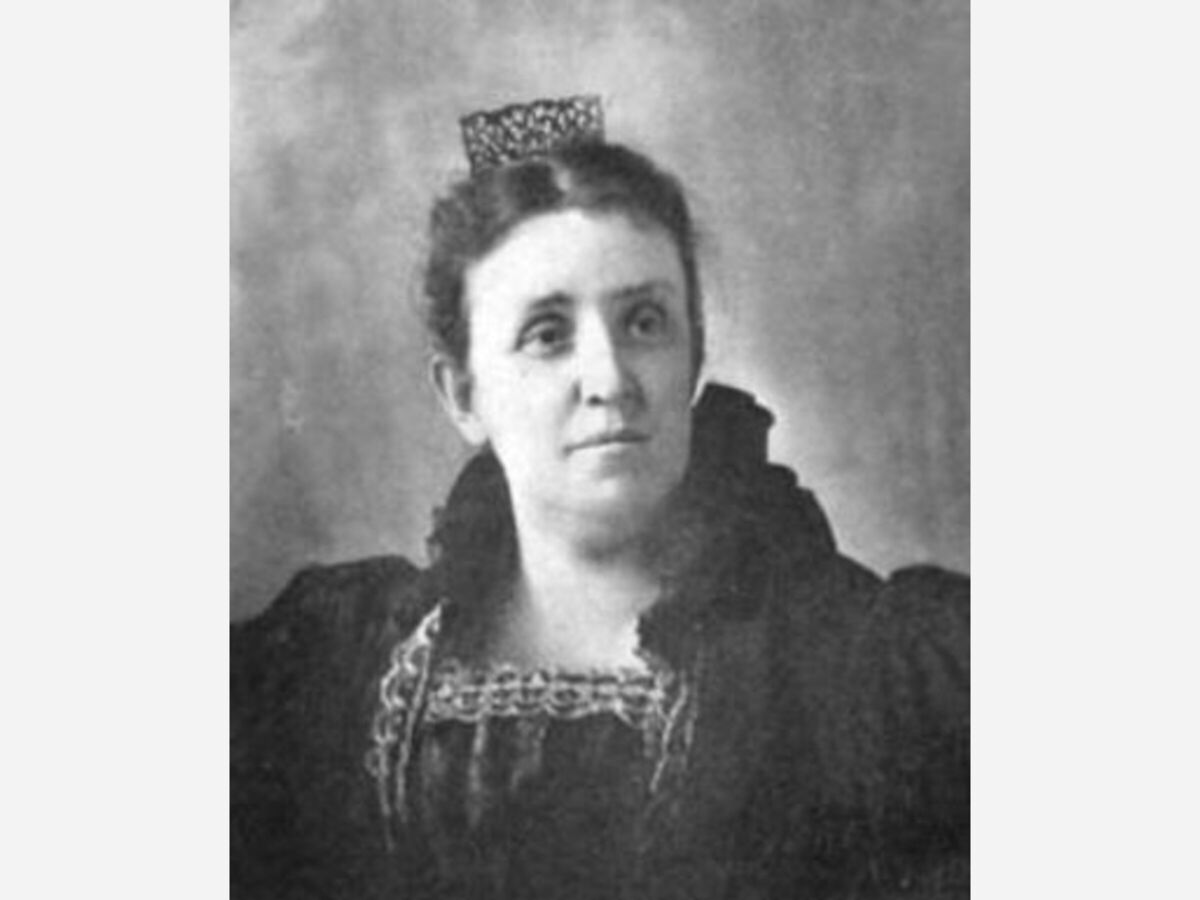Image


While sadly no longer in operation, a victim of changing times and a decline in interest in women’s organizations, for more than a century the Alden Club of Franklin was a true pillar of the community, providing much for its members and its members in turn providing much for the community.
But what of that storied name, might there by some link to the John Alden and his bride Priscilla – real Pilgrim settlers of 1620-- made famous by Longfellow’s fictitious, The Courtship of Miles Standish?
Well, it turns out there is a link, and a very real Franklinite at the center of the story.
May Alden was born in Mechanicsburg, Ohio, in 1853, a sixth-generation descendant of John and Priscilla Alden. Showing an interest in literature at an early age, she graduated from the Ohio Wesleyan University, at age 19 and a year later, in 1873, married Rev. William G. Ward.
During the next two decades her output of translations and newspaper and magazine articles showed her talent and intellectual capacity.
Profiled in 1893, in the book “Woman of the Century, 1470 Biographical Sketches... of Leading American Woman,” she was noted for her studies in Italian. French and German literature and travels in Europe. Then, in 1887 she published a well-regarded biography of Dante, which (according to the profile) won for her high rank as a thorough scholar and discriminating and graphic biographer. She followed that with a biography of Petrarch. Indeed, no less an authority than literary lion, author William Dean Howells, said that her works lifted "the stain and whitewash of centuries" to reveal historical truth.
All the while she was active in women’s organizations in Ohio, including the Ohio Women’s Press Association.
And where does Franklin come into the story?
Through her spouse, a typical enough story. He was a history professor at Baldwin University near Cleveland and eventually ended up at Emerson College in Boston. So, she came east and promptly became active in the Cantabria Club of Cambridge, a large and prominent women's organization, but eventually the couple settled beyond the city limits, in Franklin.
According to a History of the Women’s Club Movement in America, the Alden Club grew out of a class in literature held by Mrs. May Alden Ward during the winter of 1893 [in Franklin]. The club received its name from its founder, who has also been its presiding officer from the start. Its government is very simple, its meetings fortnightly, its entrance fee two dollars, and dues one dollar per years. Its work is literary through lectures, papers, and conversations. The membership is about seventy-five, and it has occasional evenings, club musicales, and other social occasions, in addition to the “gentlemen’s” night, which occurs in January. The life is not made burdensome, and is very much enjoyed by the membership. The Alden Club joined the State Federation of Women’s Clubs in 1893 as charter member, and the General Federation in 1894.
But it wasn’t all literature all the time. The Alden Club was ever involved in public betterments.
In 1906, in the midst of the great invasion of gypsy moths, the Alden Club joined with the Franklin Business Association in donating money to the fight.
And, in July, 1910, the organization arranged for the Health Library of the State Federation of Women to visit Franklin for three weeks, making 40 books and pamphlets available for borrowers.
In March, 1912, the Alden Club invited its sister clubs in surrounding towns to discuss conservation at the Ray Memorial Library, with speakers like Fred Tucker, head of the state conservation committee and Mrs. Crocker, the chair of the Massachusetts State Federation of Women's Clubs. Crocker told the assembled women about the importance of children's gardens, soils and forestry, while Tucker laid out an overview of the topic and explained that “if our natural resources are not conserved that in a few hundred years posterity will suffer.”
For decades on end, each weekly edition of the Sentinel included multiple notices about the Alden Club and its activities. And at some point, toward the middle of the century, the Alden Club spawned an auxiliary called the Aldenettes, which, among other things, was active in supporting the library and running story hours.
Still in its heyday in 1975, a Sentinel article describes an Alden Club benefit ball for the library in the run up to the nations’ bicentennial, in which any garb from any era of the nation’s history to that point, was deemed appropriate. The event was held in the library and It was further noted that for the Alden Club to provide such support was only appropriate because “the Ray family has had many members in the club over the years. Margaret Ray helped May Alden Ward found the club in 1893. It was Mrs. Ray’s daughters, Lydia Ray Pierce and Annie Ray Thayer, also club members, who set up the fund for the Ray Memorial Library in honor of their parents.”
Through the 1980s and beyond, the Alden Club and the Aldenettes continued to be active. For example, a 1985, newspaper article reported that the Aldenettes had volunteered their members’ time to update library card records and prepare cards for mailing. Volunteers on the project included Lillian Duvall, Margie Gilmore, Pattie Kavanaugh, Jayne Kittredge, Janet Norman, and Patricia Ober.
By the 2000s, however, the town was changing radically and membership was dwindling, to the point that, we are told, the Club ceased operations entirely several years ago.
And what of May Alden Ward, herself? Wikipedia tells us she was killed in an accident in 1918 when the car she was riding in on her way home from an evening lecture collided with an electric streetcar in Boston.